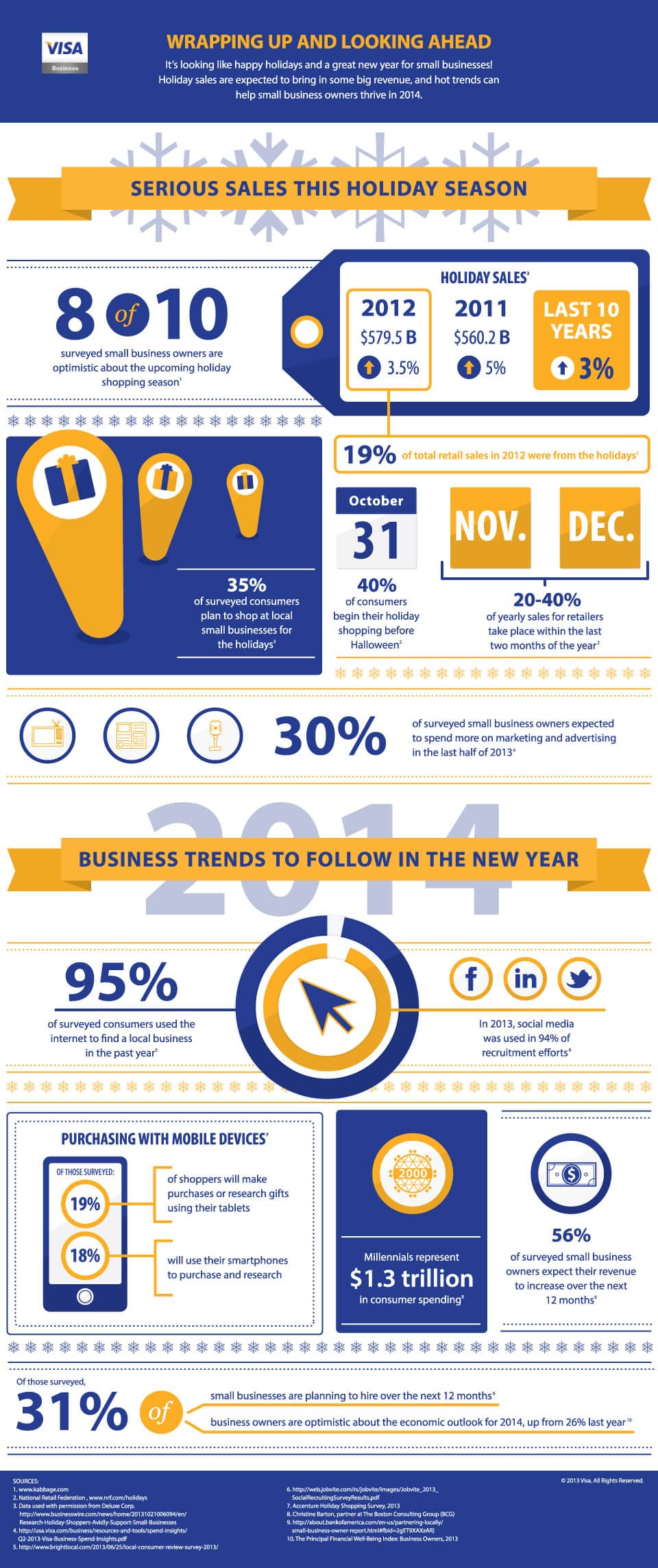Sponsored by VISA Business:
As the year draws to a close, it’s essential that you include a brand audit in your annual business wrap-up. Have the strategies and tactics you’ve implemented during the year effectively grown your brand? Has your brand veered off course in any way? Without the answers to these questions, you could be moving in the wrong direction in 2014.
The beginning of a new year is the perfect time to evaluate your brand today, review your brand goals for the next 12 months, and ensure you’re on track to reach those goals. A brand audit offers a snapshot of your brand’s performance and strategic direction at any given moment in time. It enables you to identify what’s going right and what’s going wrong as well as real and potential opportunities and threats to your brand.
Following is a high-level overview that will help you audit your brand prior to the new year.
1. Affirm Your Brand Values and Brand Promise to Consumers
What do you want your brand to stand for in consumers’ minds and what do you want its promise to consumers to be? Make sure your brand values and brand promise align with your business goals for the foreseeable future.
2. Identify Your Target Audience
Have you segmented your audience in the most effective manner to ensure your brand adds the appropriate value to specific consumers? What do they want and need from a brand like yours? Are you delivering it? Are you effectively communicating your brand value to each segment?
3. Analyze Your Brand in Relation to Competitors
Where is your brand positioned in the marketplace relative to its competitors? Is your brand occupying the right position? Are you communicating that position effectively to your target audiences? Identify your brand’s differentiators, strengths, and weaknesses to ensure it’s positioned correctly.
4. Review Your Brand Internally
There are no brand advocates that are more powerful than your employees, so it’s critical that you review brand perceptions and expectations from the executive level all the way down to ensure all employees understand, believe, and advocate the brand. Look for gaps and areas of confusion and fill them.
5. Don’t Forget Third-Party Stakeholders
A thorough brand audit shouldn’t just review consumers, competitors, and employees. It should also include a review of how other stakeholders perceive your brand and their expectations for it. Investors, journalists, and vendors matter, too. Be sure to gather their opinions, published comments, and so on.
How to Collect the Information for Your Brand Audit
Both primary and secondary research can be used to capture all of the information you need to conduct a thorough brand audit. Following are some sources that you can use during the process.
Brand Identity and Marketing Materials
- Identity guidelines
- Marketing collateral
- Promotional items
- Marketing campaign materials (including email, direct mail, ads, and so on)
- Mobile apps
- Website
- Packaging
- Event materials, speeches, and so on
- White papers
- Ebooks
Social Media
- Official brand and company social media profiles
- Employee social media profiles
- Blog
- Webinars
- Videos
- Reviews
- Online brand mentions
Media
- Media kit
- Online and offline media mentions
- Press releases
- Interviews
Corporate
- Annual report
- Trademark, copyright, and intellectual property
- Human resources communications (internal and external)
- Training materials and handbooks
Competitor
- Website
- Marketing materials
- Social media profiles
- Packaging
- Media mentions
- Reviews
Market Research
- Current and prospective customer research
- Employee research
- Third-party stakeholder research
The more information and data you can collect, the better your brand audit will be and the better positioned your brand will be to support your business goals during the next 12 months.
Check out the infographic below for some insightful end-of-year stats and business trends to follow in 2014.
I am blogging on behalf of Visa Business and received compensation for my time from Visa for sharing my views in this post, but the views expressed here are solely mine, not Visa’s. Visit http://facebook.com/visasmallbiz to take a look at the reinvented Facebook Page: Well Sourced by Visa Business. The Page serves as a space where small business owners can access educational resources, read success stories from other business owners, engage with peers, and find tips to help businesses run more efficiently. Every month, the Page will introduce a new theme that will focus on a topic important to a small business owner’s success. For additional tips and advice, and information about Visa’s small business solutions, follow @VisaSmallBiz and visit http://visa.com/business.





